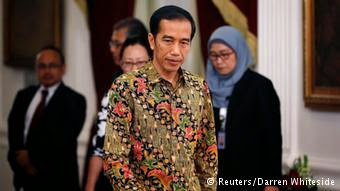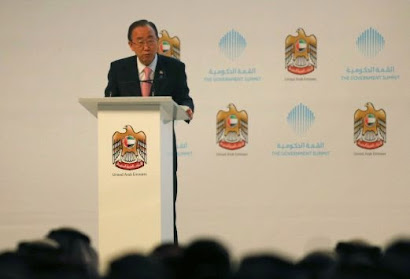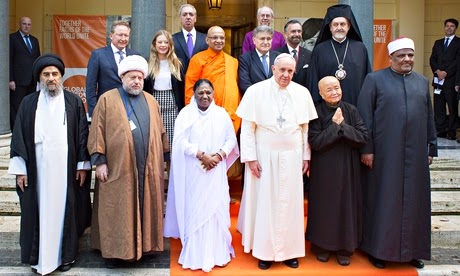
The National Museum in Central Jakarta has seen its visitor numbers swell in recent times. (JG Photo)
There’s an old saying in Indonesia that a big nation is one that appreciates its history.
Through history, people can learn about their cultural origins and their national identity. However, museums — the traditional storehouses of items from the past that help people understand the developments that shaped their society — are not very popular here. Most Indonesians seem to prefer to spend their weekends and other leisure time at the many shopping malls that are scattered across Jakarta.
But that may have started to change in the last few years, with the revitalization of Jakarta’s Kota Tua, or Old Town, triggering a new enthusiasm among the younger crowd for attending museums.
“Going to museums is actually a fun experience. More young people in this city should visit our museums instead of just going to the malls,” said Sandra Fetriana, a 21-year-old university student visiting the National Museum with some friends.
The museum, located in Central Jakarta, is trying to build exactly that kind of culture. In its favor, the museum has perhaps the most strategic location of any such institution in the city. It’s located in the heart of Jakarta’s business district, only a 10-minute drive from the city’s main train station, Gambir, and just across the street from National Monument (Monas) park.
National Museum, or Museum Nasional in Indonesian, is also the oldest such institution in Indonesia, and has the country’s largest historical and cultural collection, with more than 141,000 items. Most were collected from Indonesia’s own backyard, but there are also some items that were purchased from other countries.
John Guy, a curator of Southeast Asian art at the Metropolitan Museum of Art in New York, was at the National Museum recently taking pictures of Hindu-Buddhist sculptures.
“Museum Nasional is one of the best museums in Southeast Asia,” he said. “This museum has so many hundred-year-old collections.”
Guy visits Indonesia once a year to conduct research and always makes a point of going to the National Museum.
His favorite item is the largest statue in the collection, the more than 4-meter-tall statue of Bhairawa, a manifestation of Buddha, believed to be from the 13th or 14th century.
“Isn’t that beautiful?” he said.
The museum is also sometimes known as Museum Gajah, or the Elephant Museum, because of the bronze elephant statue in front of the building. This statue was a gift from King Chulalongkom from Thailand in 1871.
Oting Rudy Hidayat, the public relations manager for the museum, said the institution was established in 1868. At that time, the Dutch colonial government wanted a building that could serve as an office and also preserve its valuable collections.
In 1950, the newly sovereign Indonesian government made the museum a national cultural center, Oting said.
Mulya Sari, 20, a university student, said the museum offered unique items that she could not view elsewhere. “This is my third visit and I like it here very much. I don’t find this museum creepy at all,” she said.
Her favorite section is the collection of Papuan native art. Mulya is interested in accessories and makes her own jewelry as a hobby. She said she finds the collection interesting and inspiring.
The museum has two buildings — the original Gedung Gajah, or Elephant Building, and a new building that was opened to the public in 2007.
The new building’s arrangement of architecture, lighting and decoration, according to Oting, is designed to make every visit a memorable one. “We’re trying so hard to attract more people to come to this museum and learn the history and culture of Indonesia,” he said.
It can be difficult, however, to promote the museum on a limited budget, but Oting is pleased that enthusiasm for the museum continues to increase. He said that in 2008, the museum had more than 158,000 visitors, and that 2009 was expected to be even better in terms of visitor numbers.
Sandra, the university student, said it was important for Indonesians to know about their history.
“Young people in this country should start doing something before more of our cultural items are claimed by other countries,” she said.
Guy said in other countries museums were more revered by the younger generation. “In the United States, it’s something cool for the young ones to visit museums,” he said.
“History and culture are the identity of every country, they’re the things that made you who you are right now.”
Wending a Way Through the Museum’s Sections
The National Museum’s collections are divided into seven categories:
- The “Prehistory” section displays ancient tools discovered in recent times. Highlights include a ceremonial ax from the Bronze-Iron period, tools made of chalcedony from the Neolithic period and a set of coarse-refined bracelets from the Neolithic period, also of chalcedony.
- The “Archaeology” section covers findings from Indonesia’s kingdoms from the 1st to the 15th century, including an inscribed Gajah Mada stone from the 13th century, a Dwarapala Stone from the 9th century and a Ganesha Stone from the 8th century. Most of the items were found in Central and East Java, and show how heavily the developing Indonesian culture was influenced by Indian culture and Hinduism and Buddhism.
- The “Numismatic and Heraldic” section includes coins and seals from the old kingdoms as well as from the colonial Dutch era.
- “Historical Relics” is a collection of ceramics, lamps, pottery and other everyday items from the Dutch colonization period from the 16th to 19th centuries.
- “Geography” is a collection of old maps depicting Indonesian islands from the 17th century.
- “Ethnography” is a collection of cultural objects used by different ethnic groups in Indonesia. The collection includes household utensils, miniatures of traditional houses and traditional fabrics.
- “Ceramics” is a collection of ancient ceramics coming from other regions, including China, Vietnam, Thailand, Japan, the Middle East and Europe.
The Ticket Master
Achmad Firdi started working at the National Museum in 1978 as a cleaning officer, earning Rp 9,700 a month.
Although he has now worked at the museum for more than 30 years, he says he has never considered a change of career. “I am very comfortable working here,” he said.
Since 2003 he’s been selling museum entrance tickets, priced at Rp 750 for adults and Rp 250 for children.
Despite the low prices, Rachmad said, “Sometimes, I’m still shocked to see how some people try to bargain over the ticket fee.”
In the past, Achmad said, people were reluctant to visit the museum. Now, more people are coming to the museum, especially children during school holidays.
“I think the museum is very important,” he said. “By visiting the museum you show respect to our culture.”
National Museum
Jl. Merdeka Barat No. 12
Tel. 021 381 1551, 021 386 8172
Opening Hours
Tuesday – Thursday: 8:30 a.m. - 2:30 p.m.
Friday: 8:30 a.m. - 11:30 a.m.
Saturday: 8:30 a.m. - 1:30 p.m.
Sunday : 8:30 a.m. - 2:30 p.m.
Closed on Mondays and public holidays
Free Tours
English: Tuesday and Thursday 10:30 a.m.
Japanese: Tuesday 10:30 a.m.
French: Third Wednesday of each month
Korean: First Tuesday and third Saturday of each month
Related Articles:
Hungarian divers find 17th-century Dutch ship near Brazil
Indonesian Exhibition Reveals a German-Dutch Botanist on the Frontier






No comments:
Post a Comment